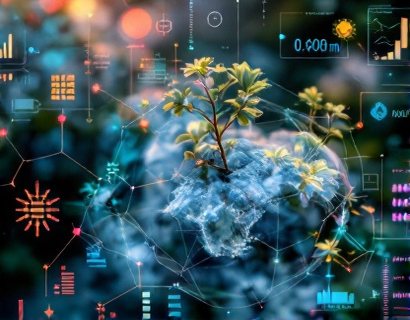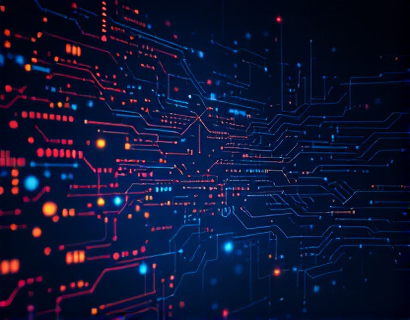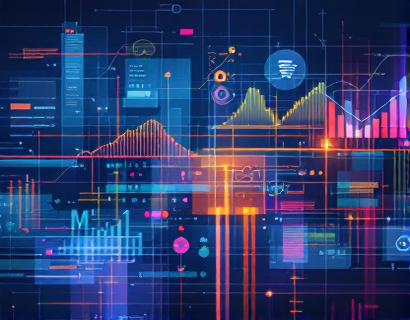Empowering Creators and Collectors in the Digital Age: The Transformative Impact of NFTs
The advent of Non-Fungible Tokens, or NFTs, has ushered in a new era of digital ownership and creativity. This innovative technology is redefining the way creators and collectors interact in the digital world, offering unprecedented opportunities for artists, musicians, writers, and other content creators to monetize and manage their digital assets. NFTs are unique digital certificates of authenticity stored on a blockchain, providing a secure and transparent method for verifying ownership and provenance of digital items.
The concept of digital ownership has long been a challenge due to the ease with which digital files can be copied and distributed. However, NFTs leverage blockchain technology to create scarcity and uniqueness in the digital realm. Each NFT is a one-of-a-kind token that represents ownership of a specific digital asset, whether it's a piece of art, a song, a video, or any other form of digital content. This has opened up new avenues for creators to earn revenue from their work and for collectors to own and trade unique digital items.
Redefining Digital Scarcity and Ownership
The traditional digital environment has been characterized by abundance and ease of replication. Files could be duplicated infinitely without losing quality, making it difficult to establish value or ownership. NFTs change this paradigm by embedding unique identifiers and metadata into digital assets, ensuring that each token is distinct and verifiable. This innovation allows creators to assign scarcity to their digital works, making them valuable and collectible.
For instance, a digital artist can create an NFT of a unique piece of digital art, limiting the number of copies that can be sold or distributed. This not only ensures the original creator's rights but also provides collectors with a sense of exclusivity and ownership. The blockchain's immutable ledger guarantees that the ownership history of the NFT is transparent and tamper-proof, adding another layer of trust and security to the transaction.
Empowering Creators
For creators, NFTs offer a direct and lucrative way to monetize their digital creations. Traditional platforms often take a significant portion of the revenue, leaving artists with a small fraction of the earnings. NFT marketplaces and platforms allow creators to sell their work directly to collectors, retaining a larger share of the profits. This shift empowers artists to build sustainable careers and invest more in their craft.
Moreover, NFTs enable creators to implement smart contracts, which are self-executing contracts with the terms of the agreement directly written into code. These smart contracts can automate royalty payments, ensuring that creators continue to earn from secondary sales of their work. This feature is particularly beneficial for digital artists whose works may gain popularity over time, as they can continue to benefit from these sales without additional effort.
Enhancing Collector Experiences
Collectors, on the other hand, gain access to a new frontier of digital collectibles. NFTs provide a way to own and showcase unique digital items that would otherwise be intangible and difficult to verify. Collectors can curate digital collections, trade with other enthusiasts, and even invest in digital assets with the potential for appreciation in value.
The community aspect of NFT platforms is another significant advantage. Collectors can connect with like-minded individuals, participate in discussions, and engage in trading activities. This fosters a vibrant ecosystem where knowledge and passion for digital collectibles are shared and celebrated. The social features of these platforms enhance the overall experience, making it more interactive and engaging.
Innovative Solutions for Digital Asset Management
Managing digital assets can be complex, especially when dealing with multiple files and ensuring their integrity and accessibility. NFT platforms offer robust tools and solutions to simplify this process. Users can upload, store, and manage their NFTs in a secure digital wallet, with easy access to transaction history and ownership verification.
These platforms often integrate with popular blockchain networks such as Ethereum, Binance Smart Chain, and others, ensuring compatibility and interoperability. This allows creators and collectors to seamlessly interact with various NFT marketplaces and applications, expanding the potential reach and utility of their digital assets.
Security and Accessibility
Security is a paramount concern in the digital asset space. NFT platforms employ advanced cryptographic techniques to protect user data and assets. Private keys and wallet addresses ensure that only the rightful owner can access and transfer their NFTs. Additionally, many platforms offer multi-signature wallets and other security features to enhance protection against unauthorized access.
Accessibility is another key aspect. NFT platforms are designed to be user-friendly, with intuitive interfaces that cater to both tech-savvy users and those new to the concept of blockchain and NFTs. Step-by-step guides, customer support, and educational resources help users navigate the platform with ease, making the experience inclusive and welcoming.
Driving the Future of Digital Ownership
The impact of NFTs extends beyond individual creators and collectors, influencing the broader digital economy. As more industries recognize the value of digital scarcity and ownership, we can expect to see a wider adoption of NFT-like solutions. From virtual real estate in online games to digital identity verification, the applications are vast and varied.
The environmental impact of blockchain technology, particularly proof-of-work blockchains, has been a point of concern. However, the industry is rapidly evolving towards more sustainable solutions, such as proof-of-stake and other energy-efficient consensus mechanisms. This shift ensures that the benefits of NFTs can be realized without compromising environmental integrity.
Community and Ecosystem Growth
The growth of the NFT ecosystem is fueled by a passionate and innovative community. Developers, artists, collectors, and enthusiasts are all contributing to the expansion and improvement of NFT platforms. Open-source projects and collaborative efforts drive innovation, leading to new features and functionalities that enhance the user experience.
Events, challenges, and collaborations within the community further stimulate engagement and creativity. Virtual art exhibitions, NFT drops, and community-driven projects showcase the potential of NFTs to bring people together and inspire new forms of artistic expression.
Conclusion
The integration of NFTs into the digital landscape represents a significant leap forward in the realms of creativity, ownership, and community. By providing secure, transparent, and innovative solutions for managing digital assets, NFT platforms are empowering creators and collectors alike. As the technology continues to evolve, the possibilities for digital ownership and interaction will only expand, paving the way for a more dynamic and inclusive digital future.










































